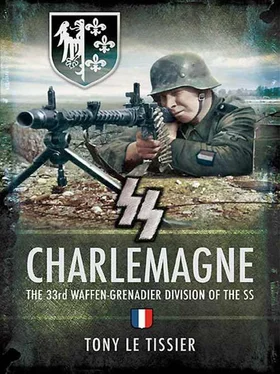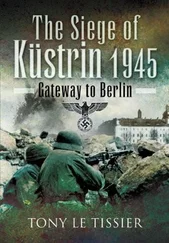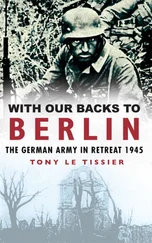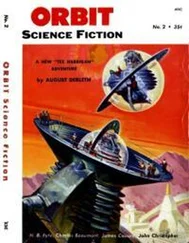SS-Artillery Regiment 57 (one HQ and two gun batteries)
SS-Tank Hunting Battalion 57 (combining tank destroyers, flak and armoured vehicles)
Divisional Units (engineers, signals, supply, etc. with the serial number 57):
Each regiment consisted of:
HQ Company with:-
HQ Staff
– Reconnaissance Platoon
– Pioneer Platoon
– Signals Platoon
3 x Rifle Companies, each of 144 men:-
– HQ Platoon
– 3 x Rifle Platoons (each of 3 sections)
– 1 Heavy Machine Gun Section
Tank Hunting Company:-
– 50mm Pak Platoon
– Panzerschreck Platoon
– Panzerfaust Platoon
Infantry Gun Company:-
– HQ Platoon
– Heavy Platoon (2 x 150mm guns)
– 3 x Light Platoons (each of 2 x 75mm guns (short-barrelled))
3 x Rifle Companies, each of 144 men and:-
– HQ Platoon
– 3 x Rifle Platoons (each of 3 sections)
– 1 Heavy Machine Gun Section
Heavy Weapons Company of 170 men:-
– HQ Platoon
– 2 x Mortar Platoons (4 x 80mm each)
– 3 x Heavy Machine Gun Platoons (4 x HMG each)
The Tank Hunting Battalion consisted of:-
– 1 x Heavy Company (75mm Pak)
– 1 x Flak Company (9 x 37mm)
– 1 x Assault Gun Company
– 1 x Infantry Escort Company
Each of the Artillery Regiment’s batteries had 4 x 105mm guns.
Theoretically, the Brigade’s fire-power was quite considerable, but in fact it was to be sent into action without its artillery and armoured vehicles, being thus deprived of 12 x 105mm pieces and 14 light tank-hunting Czech-built Hetzer tanks with 75mm guns.
The troop establishment was satisfactory, but that of the battalion and regimental headquarters less so, because of the lack of sufficient qualified technical personnel. There was a dearth of officers and, upon departure for the front, each of the regiments was only commanded by a captain, several companies by a WO I or II, and several platoons by a sergeant. The Charlemagne , now officially rated as a Division, consisted of 102 officers, 886 noncommissioned officers and 5,375 men, a total strength of 6,363 all ranks.
The command structures of the Inspectorate, Brigade, Regiments and Battalions with the names of the officers concerned prior to departure is given at Annex B.
The circumstances in which the Charlemagne was committed to war were indeed desperate.
In mid-January the Soviets had broken out of their bridgeheads across the Vistula River and swept up to the Oder River opposite Berlin by the end of the month in a lightening operation. But, in doing so the Soviets had left Pomerania out of the line of advance, enabling the Germans to muster a force there that was intended to strike south into the flank of the Soviet vanguards and annihilate them while Soviet lines of communication were still hampered by lack of bridges across the Vistula.
Under the prevailing conditions, with the old men of the Volkssturm and the 14-year-olds of the Hitler Youth being mobilised for defence, it was obvious that the departure of the Charlemagne for the front, even if insufficiently trained and equipped, could not be delayed much longer. Consequently, on 17 February 1945, the first elements of the Charlemagne , now officially up-graded to a division, entrained at Wildflecken railway station.
According to the orders received, upon arrival in the forward area the advance elements of the Charlemagn e would report to Headquarters Army Group Weichsel. This Army Group had been created on 23 January from the wreckage of the 9th Army pushed back to the line of the Oder River by Marshal Zhukov’s 1st Byelorussian Front, and the remains of the 2nd Army now standing with its back to the Baltic around Danzig as a result of the advance of Marshal Rokossovsky’s 2nd Byelorussian Front. The commander of this new formation was Reichsführer-SS Heinrich Himmler, who would later establish his headquarters at Prenzlau.
Incredibly, Himmler had arrived to take up this appointment in his personal train with only one Wafjen-SS staff officer and a single map. His train then parked in Deutsch Eylau railway station, blocking the line for refugee trains heading west, and forbidding further evacuation of the civilian population, not that this order would be obeyed.
With the arrival of Himmler as commander of Army Group Weichsel came a plethora of police officers to keep order in the rear areas and, in particular, round up deserters and stragglers to return them to the front in march companies.
By this stage of the war, it was not uncommon for units to raid trains destined for other units in order make up their own deficiencies. With a view to preventing this, Himmler renewed his orders of 4 February in a telex of the 26th to SS-General Hans Juttner, who was standing in for him as commander of the Replacement Army, to ensure that every train carrying ammunition, fuel, vehicles or weapons destined for the front were to be escorted under command of an energetic officer of at least the rank of captain, assigned by name and personally responsible, to ensure that the wagons were not stolen, uncoupled, left in sidings or sent off in the wrong direction. This unusual state of affairs, which had become quite normal, despite the Wehrmacht’s usual strict discipline, was to have grave consequences for the Charlemagne . Because of a serious situation arising in one of the areas through which it had to pass, either in Bohemia or Silesia, another formation appropriated all the Charlemagne ‘s Hetzers for its own more urgent needs.
It so happened that the Soviet had made a serious error in their planning, so that between Marshal Zhukov’s thrust towards Berlin and Marshal Rokossovsky’s thrust on Danzig, no allowance had been made for a simultaneous clearing of Pomerania, and it was into this gap, between the 9th Army lining the Oder and the 2nd Army defending Danzig–Gotenhafen area, that the German High Command began pouring a miscellany of hastily assembled units now assigned to SS-General Felix Steiner’s 11th SS-Panzer Army. Then, taking advantage of this temporarily advantageous situation, Colonel-General Heinz Guderian, chief of the general staff, proposed a pincer movement to cut into Marshal Zhukov’s forces from north and south, converging on Küstrin. Hitler, however, was more concerned with the situation in Hungary, to where he sent the bulk of his remaining armoured forces, leaving Guderian only the resources of the 11th SS-Panzer Army to mount Operation Sonnenwende (Solstice) for a thrust southwards into Zhukov’s northern flank.
Guderian, concerned at Himmler’s military ineptitude, after a long and blistering argument with Hitler, finally obtained agreement for the operation to be commanded by his own deputy, Lieutenant-General Walter Wenck. Operation Sonnenwende was launched on 15 February, achieving temporary surprise with a thrust by the 11th SS-Nordland Division on Arnswalde, where the besieged German garrison was relieved. The remaining German forces attacked on the 16th and also achieved some limited success over the next two days despite persistent Soviet counterattacks and also coming up against strong anti-tank defences of guns and mines.
On the 17th Wenck was summoned to Berlin to brief Hitler on the progress of the operation. On the way back Wenck took over the wheel from his exhausted driver, only to fall asleep himself and crash the car, hurting himself badly. General of Infantry Hans Krebs assumed control of the operation the next day, but by then the initiative had been lost. The German units had all been forced to go on the defensive and that evening Army Group Weichsel abandoned the attack. Some of the armoured elements were then immediately sent in haste to the Küstrin front, where the situation was even more critical, and SS-General Steiner was left with insufficient troops to continue.
Читать дальше












